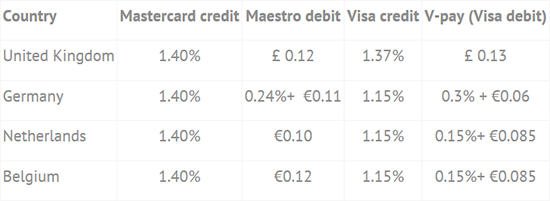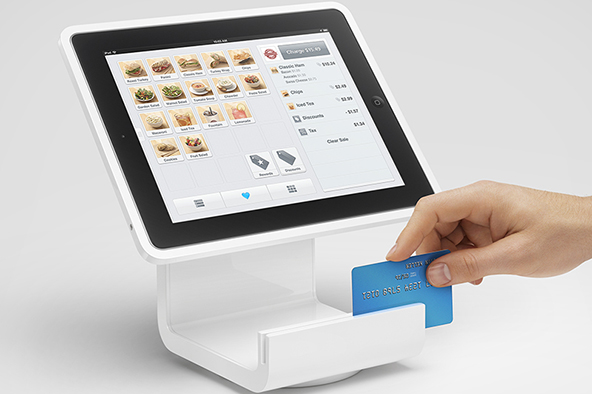Europe Takes the Mobile Payments Lead, by a Margin

Every Square clone, without a single exception, touts itself as being different from the original and usually we are told that the distinction is a major one. However, as I’ve noted before, on closer inspection all of them inevitably prove to be offering simply more of what we already have. Well, having just reviewed Adyen’s Shuttle, I hereby declare that my dictum no longer holds true. In fact, I will go a step further and pronounce the Netherlands-based company’s service to be the best direct mobile credit card acceptance solution currently available. In a moment I will lay out my case, but first I’d have to make a caveat.
In contrast to Square and PayPal Here, Adyen’s Shuttle is exclusively targeting businesses, although you may see somewhere on their website a passing mention of their service being available to consumers as well. In the real world, no one is likely to be walking around carrying Adyen’s relatively bulky stand-alone card reader on the off-chance of stumbling into a credit card acceptance opportunity on her way to work, when she could carry the minute Square or iZettle reader instead, or indeed no reader at all, as it is the case with emu. However, many businesses, and especially the bigger ones, would find much to like about the Dutch service.
What Does Adyen’s Shuttle Do?
The Shuttle is a payment card acceptance device that links to a mobile phone through Bluetooth to use its network connectivity. Users can accept credit and debit cards both using the EMV (chip-and-PIN) and the older magnetic stripe technologies. Moreover, Shuttle can be used to accept payments “across Europe, other regions to follow soon”. All cards are supported, the company tells us, which is something none of Adyen’s big European competitors can boast. That is a huge advantage. Here is how the company explains its significance:
Suppose you’re a UK clothing company. You want to expand to serve worldwide consumers. Offer them easy payment solutions, yet still keep finance and reporting under control. Adyen uses an acquirer agnostic platform with connections to acquirers all over the world. We connect you with the right international payment solutions.
Being able to set up international operations without having to worry about the payment acceptance part of the process would certainly come as a relief to many who have suffered through it.
Conveniently, the Shuttle integrates with Adyen’s other payment channels: point-of-sale, e-commerce and mobile. The platform comes with built-in “risk and fraud prevention modules, user management, payment reporting and other features that are used by the largest multi-channel retailers worldwide.”
How Much Does It Cost?
The Shuttle’s pricing structure is one of the platform’s biggest advantages, because it is built on the interchange-plus model. In contrast, most of its competitors, including all major U.S. players, use some form of the tiered pricing model, where processing rates are set based either on the mode of payment acceptance (e.g. swiped or key-entered) or the card type. The problem with all tiered models is that the processor must set its headline rate at a high enough level to ensure that no qualified transaction is processed at a loss.
Let me use a real-life example to illustrate what this means in practice. Square’s swiped rate is 2.75 percent of the transaction amount. However, the processor does not get to keep the full amount of the processing fees it charges. A substantial share of it — called interchange — is collected by the card issuers. Crucially, interchange rates vary widely. For example, a debit transaction would be processed at an interchange of 0.05 percent of the sales amount plus 21 cents, whereas the corresponding rate for a Visa rewards credit card would be 1.65 percent plus ten cents. Having to cover such wide-ranging interchange costs helps explain why Square’s qualified rate is so high.
Adyen, on the other hand, charges interchange + EUR / GBP 0.06 for debit cards and interchange + 0.60 percent for credit cards. You can readily see the difference and the company gives the following examples for the cost of acceptance of four different types of consumer cards:

There is also a monthly fee of EUR / GBP 10 per terminal, and the device itself costs EUR 99 or GBP 99, depending on where it is sold. Both charges are lower than it is typical in Europe.
The Takeaway
Adyen has certainly set a new direct mobile payment acceptance standard. But does that spell the end for the European Square clones, or indeed for the original’s European expansion plans? Not at all. Once again, the Shuttle cannot possibly appeal to non-business users. Not only would consumers never consider carrying the thing around, but they would also never agree to be paying a monthly fee for the service. But then, for Adyen consumers are a mere afterthought. The processor cares about big businesses and these would be well advised to take a close look at the Dutch company’s offering. Yet, it couldn’t possibly hurt if the Shuttle reader were designed to be at least marginally less hideously looking.
Image credit: Adyen.


The ubiquity of payment options is a key differentiator for the Ayden shuttle device. Your blog is further proof that there is not one size fits all solution for both consumer and business markets. The fact that Ayden decided to focus on business markets, and do a great job meeting market requirements is going to be a big contributor to their success. As indicated in this PwC study on mobile payment trends companies that get the value proposition of the market right will ultimately prevail.